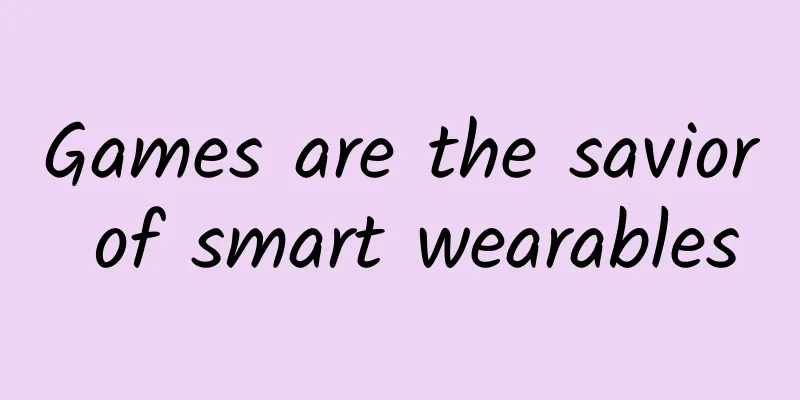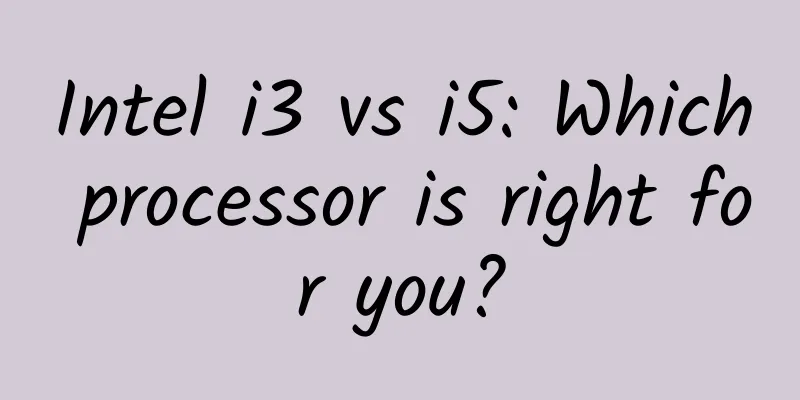Games are the savior of smart wearables

|
Smart wearables are facing a difficult period of sudden decline. At the recent CES, smart wearables were no longer the focus, but manufacturers were still discussing the concept that was touted a few years ago - quantified self. They are still constantly adding various quantified self ideas, from body sensation, heart rate, body temperature to brain waves. However, these dazzling technologies are difficult to solve the most basic problem, which is to make ordinary people insist on wearing them. If they don't insist on wearing them, the bright prospects behind the data will be zero. The sad suspension of Google Glass and the lack of novelty in the application of bracelets have cast a shadow on smart wearables. What smart wearables lack is “current applications” The wearable craze has been going on for two or three years. The biggest contribution of the past two or three years is that hardware has been integrated into our bodies, from headbands, glasses, bracelets, watches, belts, clothes to shoes. However, the application has been hesitant. On the road to convincing consumers to use it, there are probably the following explorations: Pay attention to health. This may be the earliest focus of smart wearables. Indeed, modern people are paying more and more attention to health. How much they walk, how well they sleep, whether they drink enough water, whether their blood pressure is high, and whether their heart rate is fast. These seem to be what everyone needs. However, after the novelty period, few people care about these almost unchanging data. In fact, these quantitative numbers seem to be no match for the more direct feelings in our bodies, such as whether we sleep well or not. Our own feelings are more reliable than numbers. If you already feel uncomfortable and want to measure, then what is the difference between the so-called "smart wearables" and the previous "unintelligent" measuring devices? Is it just changing the display interface from the device to the mobile phone? Focus on convenience. This is another focus of smart wearables. From Google Glass to Apple Watch, its core concept is to have a more natural medium for obtaining information besides mobile phones. In fact, this is indeed very tempting and should be recognized. However, the temporary failure of Google Glass (although I like it very much) and the embarrassing sales of various smart watches show that the hardware with current capabilities does not bring convenience, but trouble. Whether it is battery problems, screen display problems, control problems, or even the problem of being unable to use it without a mobile phone, these make it difficult for you to continue to enjoy that little bit of convenience. Focus on safety. Safety is indeed a rigid demand of consumers. The most common application is anti-lost, anti-lost for children and anti-lost for the elderly. This is the most difficult application to replace and the application that consumers are willing to spend money on. However, safety issues do not occur every day, and may not occur for several years. If we only focus on safety applications, the motivation to insist on wearing will gradually be exhausted. This occasional use scenario is difficult to take the lead in triggering the application. While these core application functions have not yet gotten out of trouble, smart hardware manufacturers are also constantly adding attractive factors to their products, such as fashion. Judging from the release of smart hardware products with increasingly high-end styles, all kinds of cool exteriors have become the main gimmick, and even Swarovski crystals have become a common accessory for various hardware. Even if you don't use the functions when you buy them, just think of them as looking good. Although it is not wrong to focus on appearance, it is not the right way. The ultimate goal of hardware is to make people use it. It is not wrong for smart wearables to focus on health, convenience, and safety. What is lacking is people's persistence. Health and safety are too long-term. It is useless to emphasize that the data accumulated over several years will have great value. People are usually lazy and it is difficult for them to pay for something long-term. Therefore, smart wearables need to meet the needs of people for use in the present. Smart wearables + games, an immeasurable new blue ocean Perhaps only games can take on this responsibility. In fact, the three major driving forces behind the rise of the Internet were: Games, Gamble, and Girls. Even now, these are still the sources of traffic and revenue for many Internet giants. Because these three things represent the most primitive and essential impulses of human beings, and they are long-term and continuous impulses, that is, winning over the same kind and obtaining reproduction. In this respect, Games and Gambles are the same in a certain sense, that is, to win. When conventional applications are difficult to gain long-term attention in smart wearables, introducing gaming elements, or simply focusing on gaming, may make smart wearables truly explode. To give you a real example, I have two children's smart watches (I won't promote the brand), both of which are safety-oriented. One is standard and can be used for positioning and making calls, while the other has motion sensing games, such as making some shooting movements, which will produce sounds. After using each for a period of time, the children at home will actively want to wear the watch with games, while the other one is ignored. For him, the standard watch will not have direct short-term benefits, while the watch with motion sensing games will bring him continuous joy and can show off among his peers. This is true for children as well as adults. Smart wearables have a lot to offer in the gaming field: At the most basic level, smart wearables can be used as input for virtual games. Whether it is a TV game or a mobile game, if smart wearable devices can break through the fence and quickly connect to it, then they are naturally an excellent input method. Going one step further, smart wearables can interact in reality. Unlike virtual games that interact on the screen, smart wearables are more immersive. Whether it is the VR that can be displayed by glasses or the sound and vibration that can be produced by the objects on the body, smart wearables can fully realize the happy interaction of multiple people in reality. For example, in the previous case, when you shoot a gun, there will be a gunshot, and when you whip a whip, there will be a whipping sound. This is just the simplest case. If more developers get involved, there will be more location-based and action-based applications, which will make the game more interesting. Ultimately, games are life, and life is games. Don’t forget the “quantified self” of smart wearables. These seemingly boring numbers may be games themselves. We play games with our lives, our bodies and our real spiritual feelings. As long as there are factors of “winning” or “sex” in it, the space in this field is immeasurable, such as using brain waves instead of mouse clicks to choose who is your favorite girl. Therefore, games are the best way to persuade consumers to stick to the "current application" of smart hardware. With the current joy, there will be more long-term quantifiable value. In turn, this will also give birth to a new game model. From a historical perspective, games have also changed with the changes in platforms, from the earliest terminal games to web games, and then to the current mobile games. Games will go to whichever platform entrance has traffic. Smart wearables will also become a new blue ocean for games. As a winner of Toutiao's Qingyun Plan and Baijiahao's Bai+ Plan, the 2019 Baidu Digital Author of the Year, the Baijiahao's Most Popular Author in the Technology Field, the 2019 Sogou Technology and Culture Author, and the 2021 Baijiahao Quarterly Influential Creator, he has won many awards, including the 2013 Sohu Best Industry Media Person, the 2015 China New Media Entrepreneurship Competition Beijing Third Place, the 2015 Guangmang Experience Award, the 2015 China New Media Entrepreneurship Competition Finals Third Place, and the 2018 Baidu Dynamic Annual Powerful Celebrity. |
<<: Why online video can’t defeat cable TV in the end?
>>: Augmented reality prospects: Can Microsoft HoloLens herald the future?
Recommend
Apple quickly withdraws iOS 14.3 after releasing it: Reason unknown
[[352022]] Apple did the same thing again. Wasn’t...
What are the effective methods of video promotion?
In 2019, many high-quality TV series were broadca...
Grab the tickets! How will 12306 face the "big test"?
"This year's Spring Festival travel seas...
Detailed explanation of the latest process for submitting Apple iOS APPs for listing, a practical guide for novices to list on the App Store!
Let me first briefly talk about the steps of list...
2021 Second-level Construction Engineer "Construction Engineering Regulations and Related Knowledge" Basic Lecture Video Tutorial
Course objectives: Those with no basic knowledge ...
Attacking India: Why domestic mobile phones are unable to defeat local giants
Since last year, as the domestic mobile phone mar...
The most searched topic! After having an erection, be sure to be alert to this disease
recently Various rumors circulating on the Intern...
Will Douban Movies, which is undergoing transformation, be swallowed up by BAT after being cannibalized?
You are criticizing Douban, and you are saying ho...
There are 4 Guineas in the world. Can you tell which coup is which?
This article was first published by Hunzhi (WeCha...
YotaPhone: Learning from Xiaomi in China
During the coldest winter in China’s mobile phone...
Why your short video has no recommendations?
Many people will find out when they start making ...
The secrets of the death of smart hardware startups
This article is transferred from: Channel Help Sh...
Can palm lines be used to diagnose high blood pressure? Will frequent use of antihypertensive drugs make blood vessels fragile? Don't believe these rumors
Hypertension is a common chronic disease and is k...
OLED dark room tear LCD TV: black beats the color of the real youren
The TV industry, which is used to being calm, has...
Want to learn how to post red envelope photos all over your circle of friends? Former Tencent director teaches you how to create a hit product!
Regardless of whether one has the resources, expe...









